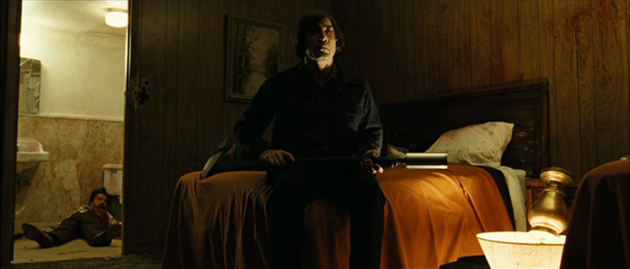Jess Gonchor

AS: In those Coen brothers movies how much do you build on a stage and how much is shot practically?
JG: Well, it’s very rare that you get something all-in-one, there’s always some restrictions on whatever it is. In True Grit the boarding house that Mattie slept in was broken up into three different elements. We built the exterior of it as part of this town that we built. It was basically three sides of the boarding house and a porch. Once Mattie opened up the door we shot at a practical location. Which was a couple of miles away from that town. It was an old Victorian house that we completely redid. And then also on stage we built the bedroom because we had to have some camerawork and some special lighting and it needed to be controlled. The actual room in the Victorian was too small to do it all practically.
So the two scenes at the boarding house were broken up into three different locations and shot over six days in three different parts of Texas. It all depends on how much you can shoot practically and how much you control. A lot has to do with the confinements of filming, and the angles. On No Country we used a couple of exteriors of hotels but we didn’t really shoot any motel room on location. We built all of the motel rooms. There was all the interaction with the air-shaft. Four or five motel rooms were all built on stage. For a couple of them we shot the exteriors of existing motels.
The Coen brothers edit their movies. That’s another amazing thing. They can visualize how the movie is going to fit together. And I say, Is it okay if we do this here and that there? And they look at each other and say, Okay, we can make it work. That’s going to be the best way to carve it up. But sometimes it’s not. Sometimes you have to look out a door and see something across the street you can’t just cut to something else. How much you shoot practically and how much you shoot on a stage also really depends on if you’re shooting at night or if you’re shooting during the day. Personally I love to shoot things practically, I think the things look more real. But there are reasons to do things on stage like for the sheer factor of all those motel rooms having so much gunfire going off. We have to put squibs in all the walls and there’s all the blood, so you have to build those.
AS: For those built sets do you create scale models and do a lot of sketches?
JG: Yeah, we draw them. I find that the practical, quick model is the easiest way. You can pick it up and look at it and handle it. Stick it up to your eye and look through a door, look through a window. I don’t have all the money in the world so I’m going to say that it’s a little antiquated what we do. There’s a lot of stuff on the computer, yes, but there’s also a lot of stuff that’s done the way it’s been done forever. It’s cutting up cardboard and putting the pieces together and holding them up to the sky and seeing how they react to the light and seeing how you can stage the action. So I use a combination. I’m pretty old-school with some of that stuff. I still like to do it the old-fashioned way, building some models even if they’re not to the greatest detail. It helps the conversation. Get everybody in front of that and really just poke it with a pencil and push it one way and shove it another way. It’s like reading The New York Times in newspaper form instead of on-line.
Pingback: Sarah Greenwood